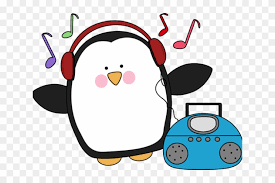Cumbia: the music of the Americas
- jamesgeraghty
- Jun 17, 2023
- 4 min read
One of the joys of Calexico is that they constantly offer up a wide range of flavours in their music - folk, country, rock, americana, jazz, mariachi, and also cumbia. I'd never heard of cumbia before them, but from their songs like Cumbia de Donde, Cumbia del Polvo and Cumbia Peninsula, I was pretty sure I liked it.
But what is it?

Cumbia is a music and dance that originated in the northern provinces of Colombia, around Cartagena. I've read several things about how far back it goes, but it was certainly prevalent by the nineteenth century. It blends elements of Africa, Amerindian and European sounds, it is percussion heavy, with common use of drums, flutes, maracas and later accordions.
The music has gradually spread around the Americas, from South America, up through Central America and into the USA. This means that the style of the cumbia varies from country to country. Masterclass.com talked about the dance beginning in the nineteenth century, being born out of a courtship dance brought over by African slaves - there is a music style originating in Guinea called cumbe.
Indigenous sounds, and instruments, were added along the way, with more drums and flutes, and then as it moved into the twentieth century, the European influence joined the party, and with it, the accordion.
The Instruments:
With it being percussive, drums are obviously at the heart of it all. So you will find single head drums like the tambor alegre and llamador, as well as double headed tamboras. Then there is the flute, or gaita, and the guiro, which is a ridged bit of wood that is scraped to make the distinctive sound.

On the move:
Originally considered to be somewhat vulgar and lower class, Cumbia started to spread further in the mid-twentieth century, aided by the growth of vinyl records. It had reached Mexico by the 1940s, popularised by Luis Carlos Meyer Castandet, and the big band orchestras of Rafael de Paz and Tony Camargo. A good dollop of local mariachi was also stirred into the pot, but also Caribbean styles like son, vallentano and merengue.
Luis Carlos Meyer Castandet: La Historia - https://youtu.be/GSlKFW0Ctug
In 1960s Peru, another new variation emerged, often called Chicha, this time with added surf guitars! It seems to have been a meeting of Peruvian oil workers bringing the cumbia, and the American businessmen bringing the west coast twang. Popular proponents include Los Destellos and Los Wemblers de Iquitos.
As Peruvian and Bolivian immigrants headed south into Argentina in the 1990s, it took a hold there too. The local sound is called Cumbia Villera, and it particularly resonated with the dwellers of Villas Miseria, the shanty towns and slums of Argentina.
It's all in the rhythm:
The traditional Cumbia rhythms, called clave, were common in Afro-Cuban music, with a triple pulse. As mentioned, it is a percussion heavy music - and the dance involves the women waving their long skirts, while the men have one hand on their back and the other holding a hat, which they take on and off, with a wave.
More modern Cumbia has also fused in sounds of electronica, country and even hip hop. The modern rhythm is a Latin alegre, which features an offbeat rhythm.
Cumbia Marimbera is common across Southern Mexico and Central America.
Cumbia Rebajada has a much slower tempo.
Cumbia Sonidera emphasises the use of that guiro, but also organs and electronic elements. In Mexico, the sonideras are DJs, who gradually added in saludos (shout outs) into the lyrics.
Cumbia Norteña is a Mexican variation related to the accordion heavy ranchero music.
Alexandra Lippman, a DJ and record label owner, says, "It's a very dynamic genre of music, in the sense that in different states and regions, musicians will play it using different tempos and different instruments. It's very open to taking on different stylistic elements. It can differ from country to country, and from city to city."
Who are the players?
The aforementioned Luis Castandet, is the man who is considered to have introduced Cumbia into Mexico, working with band leaders like de Paz, and producing songs like La Historia.
La Sonora Dinamita began life in Cartagena de Indias, Colombia, in 1960, and are credited as being the band that helped bring cumbia international popularity. They have used many female vocalists over the years, such as Vilma Diaz, dubbed La Diva de la Cumbia.
La Sonora Dinamita: Mi Cucu - https://youtu.be/6AQSUBEkVHk
Los Ángeles Azules started out in Mexico in 1980, playing in the Cumbia Sonidera style, with tunes like Cómo Te Voy Olvidar (1997).

Aniceto Molina Aguirre (left), who died in 2015, was a Colombian musician who became popular in El Salvador, through songs like El Campanero and La Burrita.
Los Gaiteros de San Jacinto (below) played more in the traditional folkloric style, starting in the 1940s.

Los Ángeles Azules: Cómo Te Voy Olvidar - https://youtu.be/nxXvOEPsE0s
Aniceto Molina: La Burrita - https://youtu.be/zk4wCjcaiHY
Cumbia in culture:
Argentinian-American, Jasmine Garsd, writing for NPR (National Public Radio) in the US, describes Cumbia's place in Latin culture.
"In Latin America, no musical style has been as widespread, unifying and, I would argue, misunderstood as cumbia. Cumbia is the musical backbone of the continent.... Engraved in each vertebra of cumbia is the history of Latin America itself. Brought to Colombia around the time it became a Spanish colony, it was heavily influenced by the instruments of native tribes, such as the gaita flutes and the guacharacas."
It gained popularity perhaps because of the simplicity of the dance steps involved, especially compared to the more complex salsa. Eduardo Diaz, director of the Smithsonian Latino Center thinks that this is because the genre was born in slavery, where shackled legs would have restricted movement.
Los Gaiteros de San Jacinto: Viene Amaneciendo - https://youtu.be/9iSgYI5d9P8
Raquel Pacheco, an assistant professor in anthropology at UC Santa Barbara, says, "Cumbia is part of Latino identity now. It's a genre that unites immigrants from many countries." Colleague David Novak adds, "It connects disparate Latinx communities around the world. It has only very recently started to break through to the dance scenes in cities like Berlin and London."
Novak continues, "No matter where you are in Latin America, if you ask people where cumbia is from, many people will say 'here'!" Going back to its simplicity and popularity, Pacheco explains that it is a "very welcoming genre - not intimidating at all" which, of course, makes it much easier to dance to at parties.
Here's the one that started it off for me...
Information from:
Wikipaedia
Masterclass
Kiddle
The Current (UC-SB)
NPR
Time Out magazine



Comments